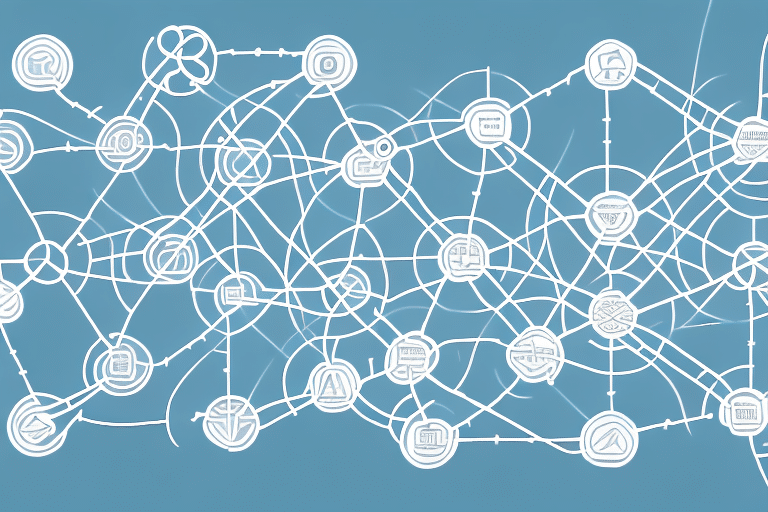Introduction to Supply Chain Management
Successful businesses rely on the efficient and effective management of their supply chain. Supply chain management (SCM) refers to the coordination and oversight of all activities involved in producing and delivering goods and services—from purchasing raw materials to the final delivery of products to customers. Adopting the right SCM approach is crucial for ensuring seamless operations, reducing costs, and enhancing customer satisfaction. In this article, we delve into various types of supply chain management, exploring their benefits and drawbacks to help businesses make informed decisions.
The Importance of Supply Chain Management in Modern Business
Effective supply chain management has become increasingly vital in the contemporary business landscape. Factors such as globalization, technological advancements, and heightened competition demand that businesses maintain agile and adaptive supply chains to stay competitive.
Enhanced Efficiency and Cost Reduction
Streamlining supply chain processes can lead to significant cost savings and increased operational efficiency. According to a Forbes report, businesses can reduce operational costs by up to 20% through optimized supply chain strategies.
Improved Customer Satisfaction
Effective SCM ensures that products are delivered in the right quantity, at the right time, and at the right price, which directly impacts customer satisfaction and loyalty.
Risk Management and Resilience
Managing risks such as supplier reliability, natural disasters, and geopolitical instability is essential for maintaining a resilient supply chain. Developing contingency plans and diversifying suppliers can help mitigate these risks.
Types of Supply Chain Management
There are various approaches to supply chain management, each with its unique advantages and challenges. Choosing the right type depends on a company's specific needs and objectives.
Traditional Supply Chain Management
The traditional SCM model focuses on optimizing individual functions like procurement, distribution, and inventory management. However, this approach often leads to siloed operations, making cross-departmental coordination difficult.
Modern Supply Chain Management
In contrast, modern SCM adopts a holistic approach, integrating all supply chain activities through advanced technologies, data analytics, and enhanced collaboration. This integration fosters greater transparency and efficiency across the entire supply chain.
Lean, Agile, and Responsive Supply Chains
- Lean SCM: Emphasizes waste reduction and efficiency by minimizing inventory levels.
- Agile SCM: Focuses on flexibility and speed to respond swiftly to market changes.
- Responsive SCM: Prioritizes real-time responsiveness to meet dynamic customer demands.
Each model offers distinct benefits, and businesses often adopt a hybrid approach to align with their strategic goals.
Phases of Supply Chain Management
Understanding the various phases of SCM is crucial for designing and managing an effective supply chain.
Planning
Involves forecasting demand, designing products, selecting suppliers, and planning production schedules. Accurate demand forecasting is essential to balance supply with customer needs.
Sourcing
Entails procuring raw materials and services necessary for production. Building strong relationships with reliable suppliers is key to ensuring quality and timely deliveries.
Manufacturing
Focuses on converting raw materials into finished products. Efficient manufacturing processes can significantly reduce production costs and lead times.
Delivery
Includes transportation, warehousing, and distribution of finished goods. Optimizing logistics ensures that products reach customers promptly and in good condition.
Returns Management
Deals with handling returned products and managing associated costs. Effective returns management can enhance customer satisfaction and recover value from returned items.
Key Components of a Successful Supply Chain
A robust supply chain is built on several critical components that work together to ensure smooth operations.
People
Effective communication, collaboration, and teamwork among supply chain stakeholders are essential for seamless operations.
Processes
Streamlined processes eliminate bottlenecks and redundancies, reducing delays and operational costs.
Technology
Advanced technologies like SCM software, RFID, GPS, and data analytics automate and optimize supply chain processes, enhancing efficiency and accuracy.
Data
Leveraging data analytics allows businesses to track supply chain performance, identify trends, and make informed, data-driven decisions.
Best Practices in Supply Chain Management
Implementing best practices can lead to significant improvements in supply chain efficiency and cost savings.
Supplier Relationship Management
Building strong relationships with suppliers through regular communication and performance monitoring ensures reliability and quality.
Inventory Optimization
Maintaining optimal inventory levels prevents overstocking and stockouts, balancing costs with customer service levels.
Demand Forecasting
Accurate demand forecasting aligns production with market needs, reducing waste and improving resource allocation.
Transportation Management
Efficient transportation strategies lower shipping costs and enhance delivery speeds, contributing to overall supply chain performance.
Challenges and Future Trends in Supply Chain Management
The supply chain landscape is continuously evolving, presenting both challenges and opportunities for businesses.
Current Challenges
- Global Disruptions: Events like the COVID-19 pandemic highlight the vulnerability of global supply chains.
- Technological Integration: Adopting and integrating new technologies can be complex and resource-intensive.
- Sustainability Demands: Increasing pressure to adopt environmentally friendly practices requires significant adjustments.
Emerging Trends
- Automation and AI: Automation and artificial intelligence are transforming supply chain operations, enhancing efficiency and decision-making.
- Internet of Things (IoT): IoT devices provide real-time tracking and monitoring, improving visibility and management.
- Sustainable Practices: There is a growing emphasis on sustainability, with businesses adopting eco-friendly sourcing and production methods.
- Enhanced Supply Chain Visibility: Advanced analytics and data sharing technologies are improving transparency across the supply chain.
Staying abreast of these trends allows businesses to adapt proactively, maintaining competitiveness and resilience in a dynamic market environment.
Conclusion
Effective supply chain management is indispensable for the success of any business. By understanding the different types of SCM, implementing best practices, and staying ahead of emerging trends, organizations can optimize their operations, reduce costs, and achieve a competitive advantage. Embracing a holistic and data-driven approach to supply chain management ensures that businesses can meet the evolving demands of their customers and navigate the complexities of the modern marketplace.






















